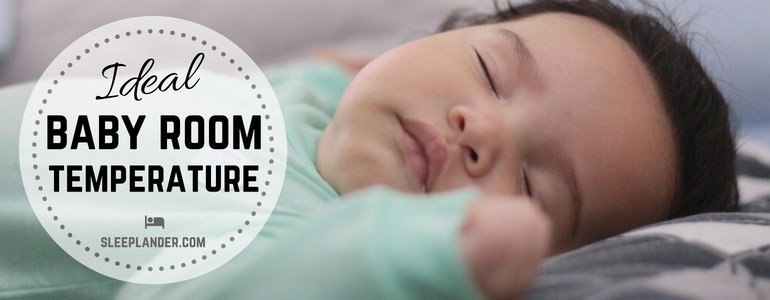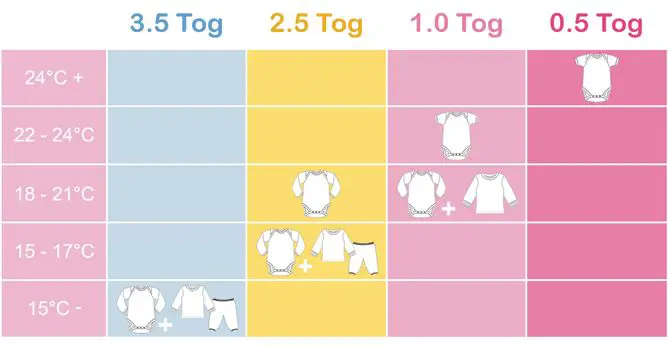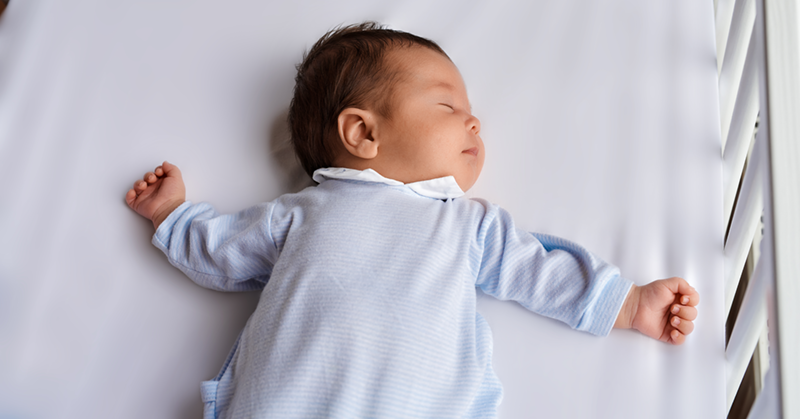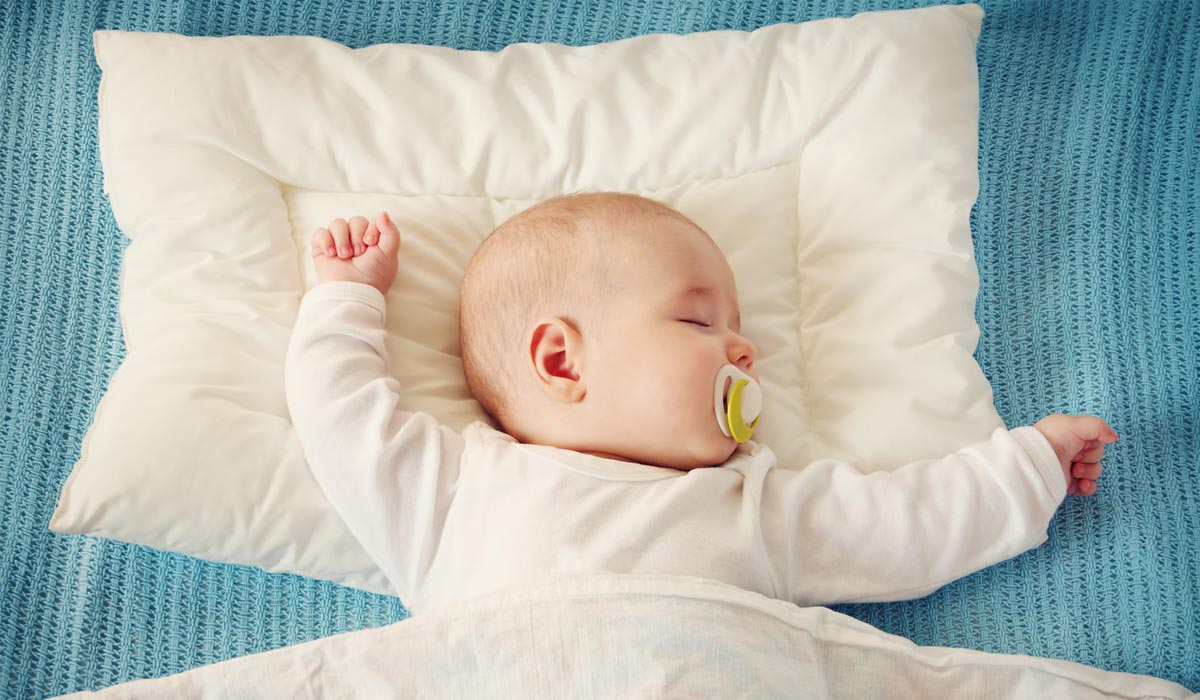As a parent, one of your top priorities is to ensure the comfort and safety of your baby. This includes maintaining the right temperature in their room. But with so many conflicting opinions and advice, it can be overwhelming to figure out the best temperature for your little one. Here are 10 tips to help you keep your baby's room at the perfect temperature.How to Keep Your Baby's Room at the Perfect Temperature
Tip #1: The ideal temperature for a baby's room is between 68-72 degrees Fahrenheit. This range is not too hot or too cold and is most comfortable for a baby's sensitive skin. Tip #2: Use a thermometer to monitor the temperature in your baby's room. This will help you make adjustments as needed to maintain a consistent temperature. Tip #3: Invest in a thermostat that allows you to control the temperature remotely, such as a smart thermostat. This will come in handy during the night when you don't want to disturb your sleeping baby. Tip #4: Dress your baby in layers to help regulate their body temperature. Use a onesie and a sleep sack or swaddle for warmer temperatures, and add a light blanket or sleep sack for cooler temperatures. Tip #5: Avoid using electric blankets or heating pads in your baby's room. These can overheat the room and pose a safety hazard. Tip #6: During the summer months, use a fan to circulate the air in your baby's room. This will not only keep the room cool, but it can also help reduce the risk of Sudden Infant Death Syndrome (SIDS). Tip #7: When using a fan, make sure it is out of reach of your baby. You can also opt for a ceiling fan instead, which will keep the room cool without any cords or wires to worry about. Tip #8: Avoid over-dressing your baby. If you notice them sweating or their skin feels clammy, it's a sign that they are too warm and you should remove a layer of clothing. Tip #9: Don't overheat your baby's room during the night. Babies sleep better in a slightly cooler room, and overheating can increase the risk of SIDS. Tip #10: If you don't have a thermometer, you can still check the temperature in your baby's room by feeling the back of their neck or their tummy. If it feels too warm, it's time to adjust the temperature.10 Tips for Keeping Your Baby's Room Comfortable
Consistency is key when it comes to the temperature in your baby's room. Fluctuations in temperature can make it difficult for your baby to regulate their own body temperature, which can lead to discomfort and even illness. When the temperature in the room is too hot, your baby may become restless and have trouble sleeping. On the other hand, if the temperature is too cold, they may wake up frequently and have trouble settling back to sleep. Consistency is also important for your baby's health. Sudden changes in temperature can make them more susceptible to illnesses such as colds, coughs, and ear infections.The Importance of Maintaining a Consistent Temperature in Your Baby's Room
Investing in a good thermostat can make it easier to monitor and regulate the temperature in your baby's room. Consider one with remote control features, such as a smart thermostat, so you can make adjustments without disturbing your baby's sleep. Some popular options include the Nest Learning Thermostat, Ecobee SmartThermostat, and Honeywell Lyric T5. These thermostats are not only easy to use, but they also come with features like scheduling and energy-saving settings.Best Thermostats for Monitoring Your Baby's Room Temperature
Knowing how to dress your baby for different room temperatures is essential for their comfort and safety. Here's a simple guide to help you dress your baby for different temperatures: Warm temperatures (75-80 degrees F): Dress your baby in a short-sleeved onesie or light cotton pajamas. A sleep sack or swaddle can also be used for added comfort. Moderate temperatures (68-74 degrees F): A long-sleeved onesie or pajamas with a light blanket or sleep sack is ideal for these temperatures. Cool temperatures (64-68 degrees F): Use a long-sleeved onesie and pajamas with a thicker sleep sack or a heavier blanket. Cold temperatures (60-64 degrees F): Layer up your baby with a long-sleeved onesie, pajamas, and a thicker sleep sack or blanket. You can also add a hat and socks for added warmth.How to Dress Your Baby for Different Room Temperatures
Aside from maintaining the right temperature, there are other factors to consider when creating a safe and comfortable sleeping environment for your baby. These include: Darkness: Use blackout curtains or shades to keep the room dark and promote better sleep. Noise: Keep the room quiet by using a white noise machine or a fan to drown out any outside noise. Cleanliness: Regularly clean and vacuum your baby's room to reduce dust and allergens that can disrupt their sleep. Safety: Make sure the crib and bedding meet the latest safety standards, and avoid using any loose blankets, pillows, or stuffed animals in the crib.Creating a Safe and Comfortable Sleeping Environment for Your Baby
A fan can be a great tool for regulating your baby's room temperature, especially during the warmer months. Here are some tips for using a fan in your baby's room: Position it correctly: Place the fan in a corner of the room, facing away from your baby. This will help circulate the air without blowing directly on them. Adjust the speed: Use a low or medium setting on the fan to prevent it from making too much noise or creating a draft in the room. Monitor the temperature: Use a thermometer to make sure the fan is keeping the room at a comfortable temperature.How to Use a Fan to Regulate Your Baby's Room Temperature
Overheating your baby's room can have serious consequences, including an increased risk of SIDS. Babies are not able to regulate their body temperature as well as adults, so it's important to keep their room at a comfortable and consistent temperature. Overheating can also lead to dehydration, which can be dangerous for babies. Signs of overheating include sweating, flushed skin, and rapid breathing.Why You Shouldn't Overheat Your Baby's Room
If you don't have a thermometer, don't worry! There are still ways to check the temperature in your baby's room without one: Use your hand: Place the back of your hand on your baby's neck or stomach. If it feels too warm, it's a sign that the room is too hot. Use a baby monitor: Some baby monitors come with a built-in temperature sensor that displays the temperature in your baby's room. This can be a convenient way to check the temperature without having to enter the room.How to Check the Temperature in Your Baby's Room Without a Thermometer
The ideal temperature for your baby's room at night is between 68-72 degrees Fahrenheit. This range is most comfortable for your baby and can help promote better sleep. It's also important to note that a slightly cooler room at night can help prevent SIDS. So resist the urge to crank up the heat for your baby's room, and instead, dress them in comfortable layers to keep them warm.The Ideal Temperature for Your Baby's Room at Night
The Importance of Maintaining a Comfortable Living Room Temperature for Your Baby

Creating a Safe and Cozy Environment for Your Little One
 As a new parent, ensuring the safety and comfort of your baby is a top priority. One aspect of creating a safe and cozy environment for your little one is maintaining the
living room temperature
at an appropriate level. Babies are more sensitive to temperature changes than adults, and an uncomfortable living room temperature can have a significant impact on their well-being. In this article, we will discuss the importance of
living room temperature for babies
and provide tips on how to keep it at an optimal level.
As a new parent, ensuring the safety and comfort of your baby is a top priority. One aspect of creating a safe and cozy environment for your little one is maintaining the
living room temperature
at an appropriate level. Babies are more sensitive to temperature changes than adults, and an uncomfortable living room temperature can have a significant impact on their well-being. In this article, we will discuss the importance of
living room temperature for babies
and provide tips on how to keep it at an optimal level.
The Ideal Living Room Temperature for Your Baby
 The ideal
living room temperature
for your baby is between 68-72 degrees Fahrenheit (20-22 degrees Celsius). This temperature range is recommended by the American Academy of Pediatrics (AAP) and is considered to be the most comfortable for infants. However, every baby is different, and you may need to adjust the temperature slightly depending on your baby's individual needs.
The ideal
living room temperature
for your baby is between 68-72 degrees Fahrenheit (20-22 degrees Celsius). This temperature range is recommended by the American Academy of Pediatrics (AAP) and is considered to be the most comfortable for infants. However, every baby is different, and you may need to adjust the temperature slightly depending on your baby's individual needs.
The Dangers of a Too Hot or Too Cold Living Room
 Maintaining the
living room temperature
within the recommended range is crucial for your baby's safety and well-being. A living room that is too hot can increase the risk of sudden infant death syndrome (SIDS) and cause heat rash or heat exhaustion. On the other hand, a living room that is too cold can lead to hypothermia, which can be life-threatening for infants. Additionally, extreme temperatures can also make your baby fussy and uncomfortable, making it difficult for them to sleep and relax.
Maintaining the
living room temperature
within the recommended range is crucial for your baby's safety and well-being. A living room that is too hot can increase the risk of sudden infant death syndrome (SIDS) and cause heat rash or heat exhaustion. On the other hand, a living room that is too cold can lead to hypothermia, which can be life-threatening for infants. Additionally, extreme temperatures can also make your baby fussy and uncomfortable, making it difficult for them to sleep and relax.
Ways to Maintain a Comfortable Living Room Temperature for Your Baby
 To ensure your baby's comfort and safety, here are some tips for maintaining a
comfortable living room temperature
:
To ensure your baby's comfort and safety, here are some tips for maintaining a
comfortable living room temperature
:
1. Use a Thermostat
Investing in a good thermostat can help you maintain a consistent living room temperature for your baby. It will allow you to monitor and control the temperature and adjust it accordingly.2. Dress Your Baby Appropriately
Dressing your baby in layers is the key to keeping them comfortable in any temperature. Use lightweight, breathable fabrics in the summer and add an extra layer or two in the winter.3. Use Curtains or Blinds
During the day, use curtains or blinds to block out sunlight and keep the living room temperature cooler. In the evening, open them to let in natural light and warm up the room.4. Consider Using a Fan
A fan can help circulate air and keep the living room temperature cooler. However, make sure it is not directly blowing on your baby, as this can cause them to become too cold.5. Monitor Your Baby's Comfort
Your baby's comfort should be your ultimate guide in determining the living room temperature . Pay attention to their cues - if they seem too hot or too cold, adjust the temperature accordingly.In Conclusion
 Maintaining a comfortable
living room temperature
for your baby is essential for their safety and well-being. By following the tips mentioned above, you can create a cozy and safe environment for your little one to thrive in. Remember to regularly check the temperature and adjust it as needed to ensure your baby's comfort.
Maintaining a comfortable
living room temperature
for your baby is essential for their safety and well-being. By following the tips mentioned above, you can create a cozy and safe environment for your little one to thrive in. Remember to regularly check the temperature and adjust it as needed to ensure your baby's comfort.


































































.png)
















:max_bytes(150000):strip_icc()/fever-checking-your-childs-temperature-2633579_FINAL_NEW-157db5602ff7485ab020ef8b62441bf6-90e035ccfe004bffb3e5c858f9980716.png)






















